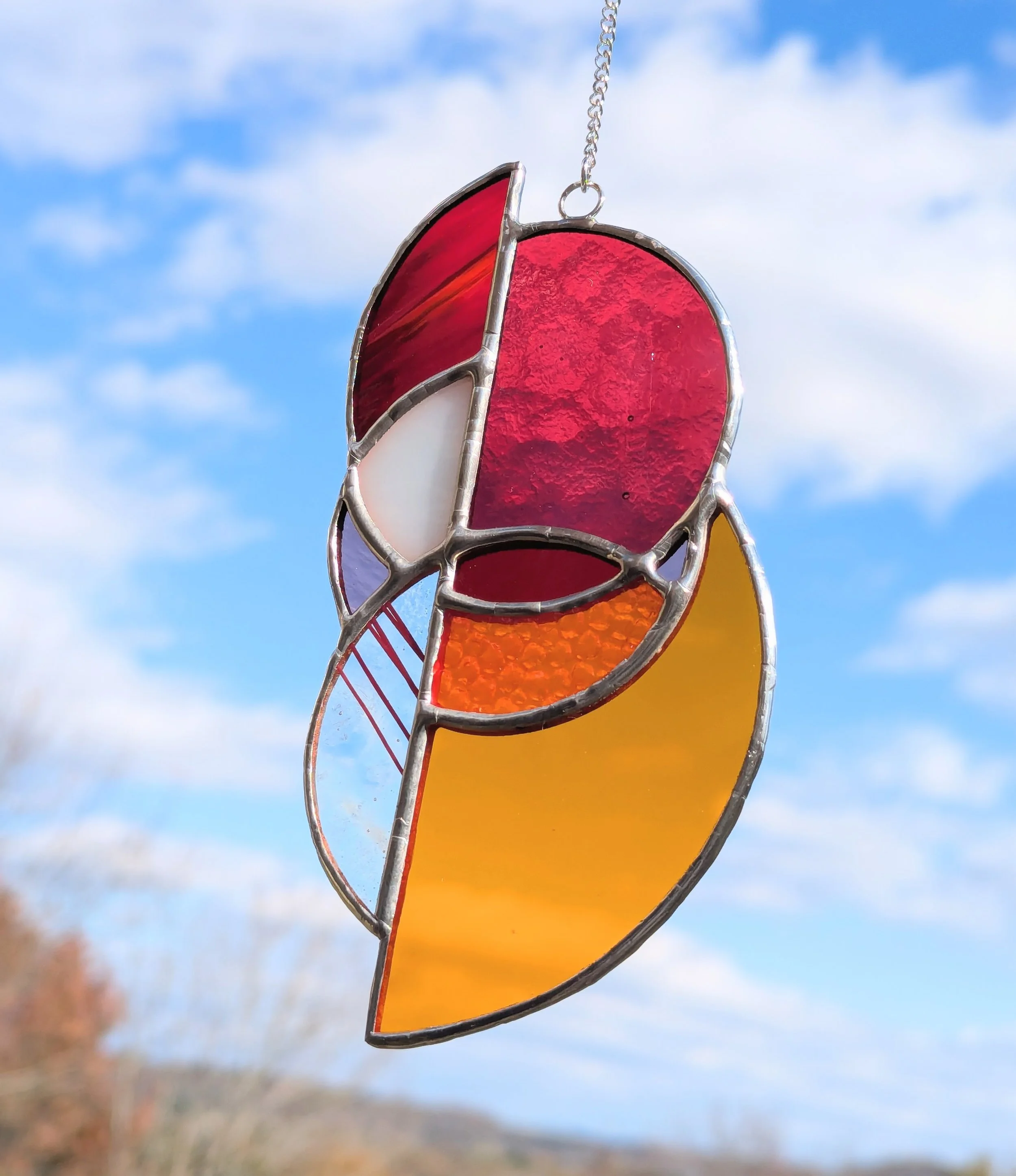
How is stained glass artwork made?
-

Design & Color Selection
Despite the name, most stained glass artists don’t “stain” glass in different colors. They begin by selecting colors for their design from existing sheets of glass. Stained glass sheets are created by glass manufacturers, who fuse sand with other materials like cobalt at high temperatures to create large sheets of colored glass.
-

Cut
Once colors are selected, each piece of the design is “cut” from the glass. A score is made in the glass using a scoring tool, and then the glass is broken along the score line. Since glass is very brittle, great care must be taken to avoid unwanted cracks during cutting.
-

Grind
The rough edges of the cut glass pieces are smoothed down using a grinding tool. This step is essential for ensuring each piece of the pattern fits together precisely.
-

Foil
After grinding, each piece of glass is wrapped in a special copper foil tape that will allow the metal solder to adhere to the glass. This step is unique to the Tiffany method, which was developed to make 3D shapes (such as lamps) achievable with stained glass.
-

Solder
The wrapped glass pieces are soldered together using a hot soldering iron and a combination of tin and lead. The iron melts the solder into a liquid that can be guided and shaped over the foil.
-

Polish and Finish
Finally, the finished piece is cleaned to remove residue from the soldering process, and polished with wax to slow the oxidation process. Finishing hardware is added so the piece can be displayed.
This process for making stained glass pieces can take anywhere from several hours to several days to complete, depending on the size and complexity of the piece.